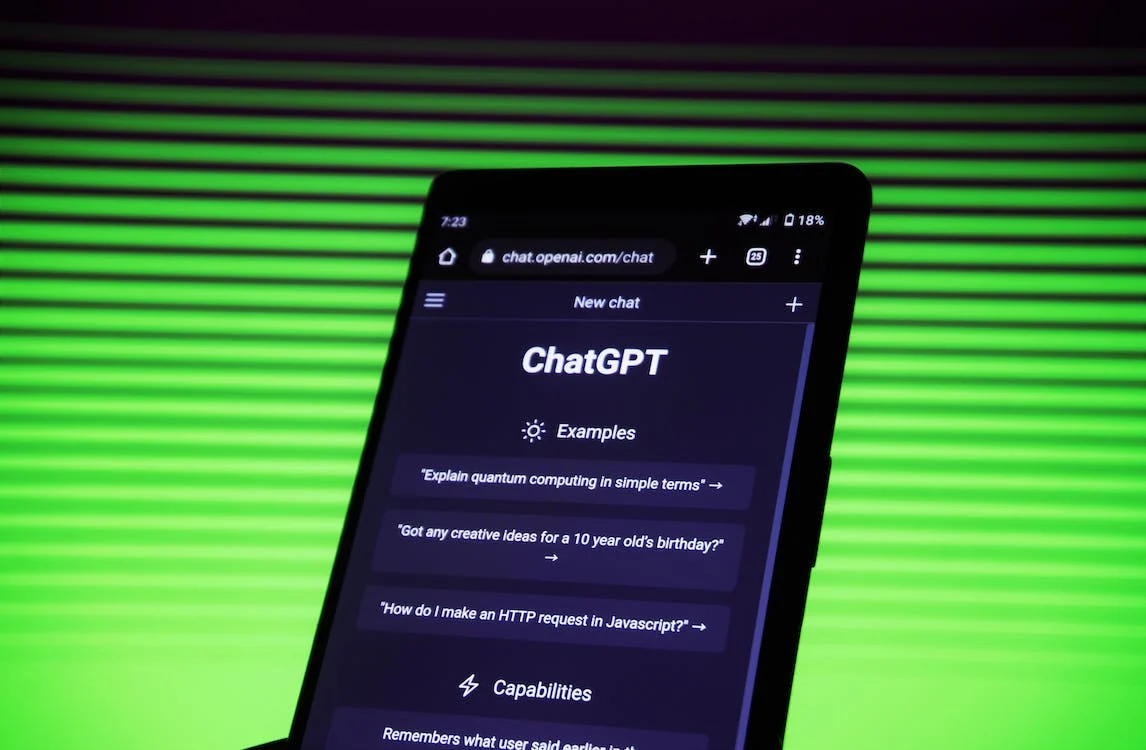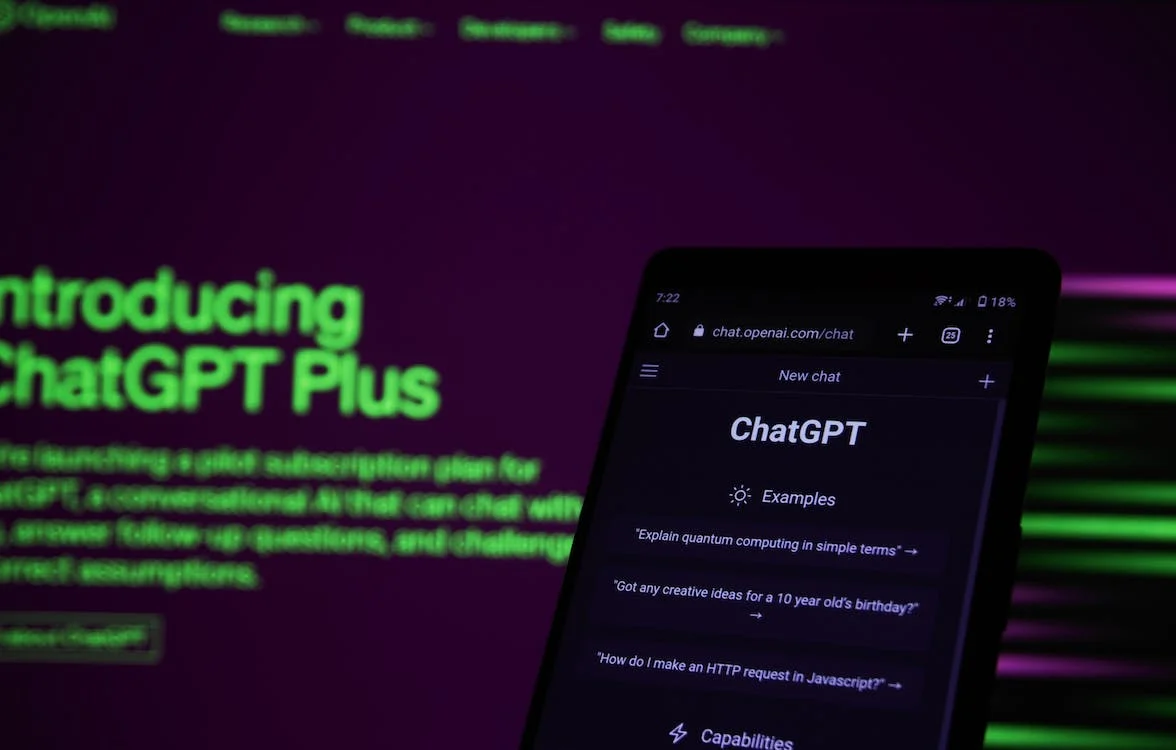Chat GPT is a type of artificial intelligence (AI) language model developed by OpenAI. It is based on the GPT (Generative Pre-trained Transformer) architecture, which is a state-of-the-art deep learning model used for natural language processing (NLP) tasks. Chat GPT is specifically designed for conversational interactions, allowing users to engage in interactive and dynamic conversations with the model.
Chat GPT is trained on a vast amount of text data from the internet, which enables it to learn the patterns and structures of human language. It can understand and generate text in a wide range of topics and styles, making it a versatile tool for various conversational use cases. Chat GPT is capable of understanding context, generating responses, and providing relevant information in a conversational manner.
Chat GPT can be used for a wide range of applications, including customer service, virtual assistants, chatbots, language translation, content generation, and more. It can facilitate interactive and engaging conversations between users and the AI model, providing responses that are coherent, contextually relevant, and human-like.
OpenAI’s Chat GPT is part of the broader family of GPT models, including GPT-2, GPT-3, and other variants, which have been widely used in the AI community for various NLP tasks. These models have significantly advanced the field of natural language processing and have the potential to revolutionize how humans interact with AI systems in a conversational manner.
How to use Chat GPT
Using Chat GPT is relatively straightforward. Here are some general steps to follow:
- Access a Chat GPT platform: Chat GPT models are typically hosted on online platforms or APIs (Application Programming Interfaces) provided by OpenAI or other service providers. You can access these platforms by visiting their websites and following the instructions to create an account or obtain an API key.
- Choose a use case: Determine the specific use case or task for which you want to use Chat GPT. This could be customer service, virtual assistance, content generation, or any other conversational application.
- Define conversation structure: Plan out the structure of the conversation you want to have with Chat GPT. Define the roles of the user and the model, and specify the format of the input and output messages. For example, you may start with a user message, followed by a model response, and continue the conversation in this back-and-forth manner.
- Prepare input messages: Prepare input messages to send to the Chat GPT model. Input messages typically consist of a series of user and model messages as input context. User messages provide instructions or queries from the user, and model messages allow you to provide initial instructions or context for the model. You can specify these messages in a list format, with each message having a ‘role’ (either “system”, “user”, or “assistant”) and ‘content’ (the text of the message).
- Make API calls: Use the API or interface provided by the Chat GPT platform to send the input messages and make API calls to generate responses from the model. The API will typically provide documentation and examples on how to format the input messages and make requests to the model.
- Handle model responses: Receive the responses generated by the Chat GPT model as output messages. Extract the relevant information from the response, and use it as needed in your application. You can also parse and process the response to extract specific information or take actions based on the generated content.
- Iterate and refine: Evaluate the responses generated by the model and iterate on your input messages or instructions to get the desired output. You may need to experiment with different prompts, instructions, or conversation structures to refine the interactions with the model and achieve the desired results.
It’s important to note that different Chat GPT platforms or APIs may have specific requirements, limitations, and pricing models, so be sure to familiarize yourself with the documentation and guidelines provided by the specific service provider you are using.
Additionally, as with any AI-powered tool, it’s essential to consider ethical implications, validate the accuracy and reliability of the generated content, and comply with relevant laws and regulations in your use of Chat GPT.
How Chat GPT Works
Chat GPT works by leveraging the GPT (Generative Pre-trained Transformer) architecture, which is a type of deep learning model for natural language processing (NLP) tasks. The architecture of Chat GPT consists of multiple layers of neural networks that are trained on large amounts of text data to learn the patterns and structures of human language. Here’s a high-level overview of how Chat GPT works:
- Input Messages: The user provides input messages that serve as context for the model. These input messages typically consist of a series of user and model messages in a conversation format. User messages can contain instructions, queries, or prompts from the user, while model messages can provide initial context or instructions to guide the model’s responses.
- Encoding: The input messages are encoded into a format that can be processed by the neural network. This encoding step converts the text input into numerical representations that the model can understand.
- Contextual Understanding: The encoded input messages are used to create a contextual understanding of the conversation. The model leverages the context from the input messages to generate responses that are relevant to the ongoing conversation and align with the user’s queries or prompts.
- Response Generation: The model generates a response based on the contextual understanding of the input messages. The response is generated word-by-word or token-by-token, with the model sampling from a probability distribution of likely next tokens based on its training data. This process continues until the desired length of the response is generated.
- Decoding: The generated response is decoded from the numerical representations back into text format, creating a human-readable response that can be presented to the user.
- Output Messages: The generated response is typically provided as an output message that is added to the conversation context. This output message becomes part of the input messages for the next round of conversation, allowing for dynamic and interactive conversations with the model.
- Iterative Process: The conversation between the user and the model can continue in an iterative process, with the user providing additional input messages and the model generating responses based on the updated context. This allows for dynamic back-and-forth interactions and conversation flows.
It’s important to note that the inner workings and details of how Chat GPT specifically functions may vary depending on the specific implementation and architecture used by the service provider. Different providers may use different techniques, strategies, and optimizations to enhance the performance and capabilities of their Chat GPT models. However, the general idea is that Chat GPT processes input messages, understands the context, generates responses, and iterates through a conversation flow to create interactive and dynamic conversational experiences with users.
Is Chat GPT Provide Accqurate Data

The accuracy of data generated by Chat GPT depends on various factors, including the quality and quantity of the training data, the architecture and configuration of the model, and the instructions and context provided during the conversation. While Chat GPT models are trained on large amounts of text data and can generate responses that are coherent and contextually relevant, they may not always produce perfectly accurate data. It’s important to understand the limitations of Chat GPT in terms of data accuracy and consider the following points:
- Training Data: Chat GPT models are trained on a diverse range of data from the internet, which includes both accurate and inaccurate information. The model learns from this data and may generate responses based on the patterns it has learned. However, if the training data contains inaccurate or misleading information, there is a possibility that the model may generate responses that are also inaccurate or misleading.
- Model Limitations: Chat GPT models are not infallible and have limitations. They are based on probabilistic predictions and generate responses based on patterns learned from data. However, they do not have true understanding or reasoning capabilities like humans. They can sometimes produce plausible but inaccurate responses, especially when faced with ambiguous queries or incomplete information.
- Context and Instructions: The accuracy of Chat GPT responses is also influenced by the context and instructions provided during the conversation. If the context or instructions are ambiguous or unclear, it may result in inaccurate responses. It is important to provide clear and precise instructions to guide the model’s responses and verify the accuracy of the generated data.
- Validation and Verification: It’s essential to validate and verify the accuracy of the data generated by Chat GPT using reliable sources or external tools. Fact-checking, cross-referencing, and verifying the information generated by the model with trusted sources can help ensure the accuracy of the data before using it in any critical decision-making or application.
- Iterative Process: Chat GPT interactions are often iterative, and refining the input messages or instructions can help improve the accuracy of the responses. Experimenting with different prompts, instructions, or conversation structures, and iterating on the model’s outputs can help achieve more accurate results.
- Ethical Considerations: It’s crucial to be mindful of ethical considerations when using Chat GPT. This includes avoiding the generation of misleading or inaccurate information intentionally, being transparent about the limitations of the model to users, and taking responsibility for the accuracy of the data generated by the model.
In summary, while Chat GPT models are powerful language models that can generate coherent and contextually relevant responses, the accuracy of the data generated depends on various factors. It’s important to validate and verify the accuracy of the data, provide clear instructions, and consider the limitations of the model to ensure reliable and accurate outcomes in any application.
Conclusion
Chat GPT is an advanced language model that enables interactive and dynamic conversations with users. It has the potential for various applications, including customer service, virtual assistants, content generation, and more. It leverages the GPT architecture and large amounts of training data to generate responses based on the context provided during the conversation.
However, it’s important to understand that the accuracy of data generated by Chat GPT may not always be perfect. Factors such as the quality and quantity of training data, model limitations, context and instructions provided, and ethical considerations can all influence the accuracy of the generated data. It’s crucial to validate and verify the accuracy of the data before using it in critical decision-making or applications, and to provide clear instructions to guide the model’s responses.
As with any technology, there are challenges and considerations when using Chat GPT, including potential biases, privacy concerns, and ethical implications. It’s important to be aware of these issues and use Chat GPT responsibly, adhering to ethical standards and best practices.
In conclusion, Chat GPT is a powerful tool for generating human-like responses in conversational interactions. It has the potential for various applications and can provide valuable assistance in many domains. However, it’s important to understand its limitations, validate the accuracy of generated data, and use it responsibly to ensure reliable and accurate outcomes. As the field of AI continues to evolve, Chat GPT and other similar technologies have the potential to greatly impact how we interact with computers and information, and it’s crucial to approach their use with careful consideration and responsible practices.
What is Chat GPT
Chat GPT is a type of artificial intelligence (AI) language model developed by OpenAI.
How to use Chat GPT
Using Chat GPT involve few steps like Access a Chat GPT platform, Choose a use case, Define conversation structure and many more.
Is Chat GPT Provide Accqurate Data
The accuracy of data generated by Chat GPT depends on various factors, including the quality and quantity of the training data, the architecture and configuration of the model.








